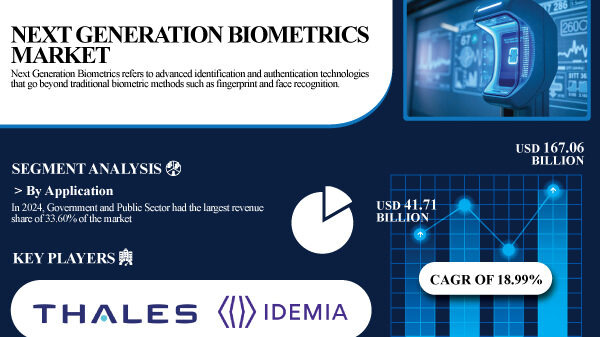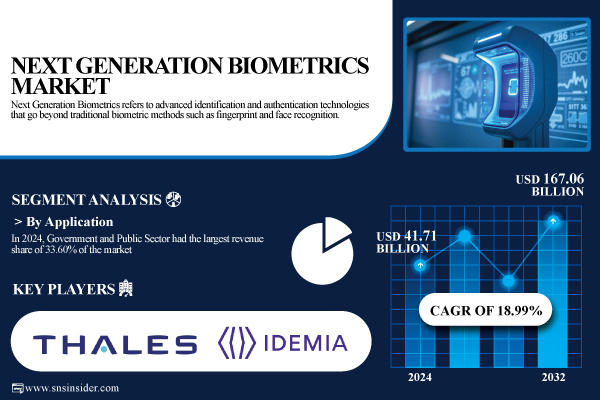The global Next Generation Biometrics Market is poised for significant expansion, with projections estimating a rise from USD 41.71 billion in 2024 to USD 167.06 billion by 2032. This growth, highlighted by a compound annual growth rate (CAGR) of 18.99% over the forecast period from 2025 to 2032, is largely attributed to the increasing demand for enhanced security across various sectors, including government, banking, and consumer applications.
According to a report from SNS Insider, the booming market is fueled by advancements in biometric technology and a surge in digital identity initiatives. As organizations seek secure and contactless authentication methods, the adoption of biometric systems is becoming more prevalent. These systems have been shown to reduce identity fraud by over 50% compared to traditional methods, further driving their implementation.
### Key Market Segments and Trends
In the United States, the market is expected to reach USD 37.36 billion by 2032. This growth is supported by national security mandates, border control operations, and early adoption in sectors such as banking and healthcare. With around 65% of fintech applications now offering biometric logins, the demand for innovative embedded sensors and software solutions is on the rise.
Fingerprint recognition currently dominates the market, capturing a 34.20% share in 2024. It is widely utilized in mobile devices, government identification programs, ATMs, and access control systems. Meanwhile, facial recognition technology is anticipated to grow at the highest CAGR of 20.21% through 2032, favored for its fast, contactless verification capabilities in diverse applications, including surveillance, airport security, and public safety.
### Applications and Deployment Models
The government and public sector led market share in 2024 with 33.60%, driven by significant deployments in national security and law enforcement. Notably, the national ID programs segment is projected to expand rapidly, with a CAGR of 20.59% as governments in regions such as Asia, Africa, and Latin America adopt digital identity solutions.
Moreover, the deployment model landscape is shifting. In 2024, on-premise deployment held a 24.60% market share, particularly in secure environments. However, cloud-based solutions are expected to grow at a remarkable CAGR of 21.95% through 2032, facilitated by the rise of biometric-as-a-service platforms and mobile onboarding capabilities.
### Regional Insights and Market Drivers
Regionally, North America dominated the Next Generation Biometrics Market with a 31.80% revenue share in 2024. This leadership is attributed to strong government investments in homeland security and the widespread adoption of biometric technologies in banking and healthcare. Meanwhile, the Asia Pacific region is forecasted to grow at the fastest rate, with a CAGR of 19.92%, driven by digital transformation initiatives and the integration of biometrics in fintech and smart city projects.
Europe remains a key player in the market, influenced by the need for secure identity verification and compliance with regulations such as the General Data Protection Regulation (GDPR). Countries like Germany are at the forefront of border control and digital identity initiatives. The Middle East and Africa, particularly the UAE, and Latin America, led by Brazil, are also advancing through biometric applications in immigration, voting, and smart city initiatives.
The market’s competitive landscape includes several notable players, including Thales Group, IDEMIA, and NEC Corporation, all of which are contributing to innovative solutions in biometric technology.
As the demand for secure and reliable authentication solutions grows, the Next Generation Biometrics Market is set to undergo transformative changes, reflecting broader technological trends and evolving security needs across global sectors.
































































